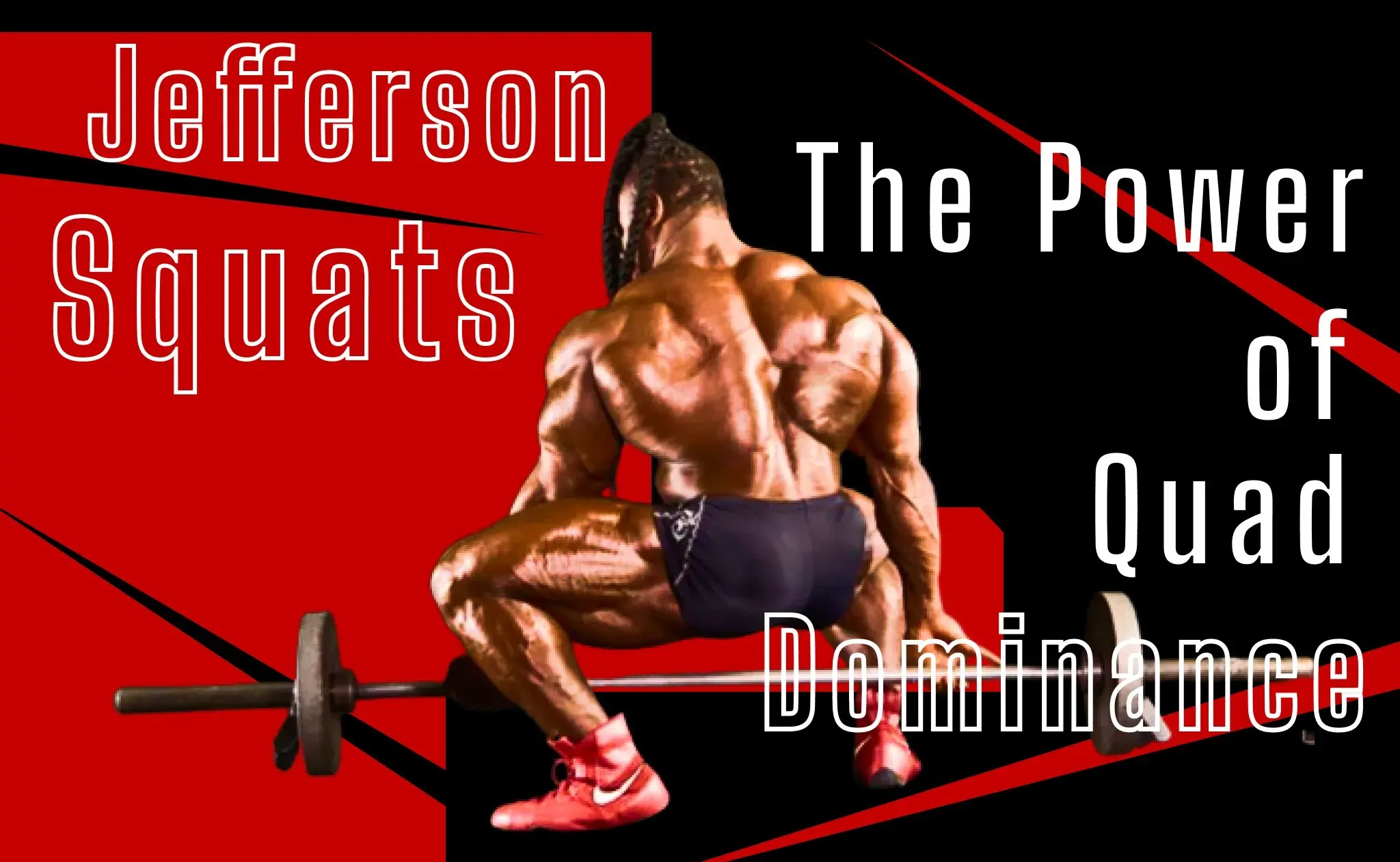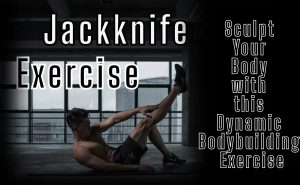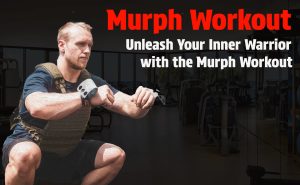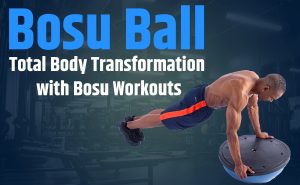This exercise is not your average squat – it challenges your balance, strength, and stability in ways you’ve never experienced before. So, say goodbye to imbalances and hello to a well-rounded lower body.
The Jefferson Squat: Unleashing the Beast Within
The Jefferson Squat is a uniquely effective leg exercise that targets and strengthens your quadriceps muscles. Unlike traditional squats, this exercise requires you to straddle the barbell, with one foot in front and the other behind.
- Straddle the barbell, with one foot in front and the other behind
- By bending your knees and lowering your body
The Jefferson Squat is a versatile exercise that can be performed with various weights and can be adapted to suit your fitness level. It’s a great addition to your leg workout routine, helping you build strong, defined quads and improve your overall lower body strength.
The Origins of Jefferson Squat
The Jefferson Squat is an exercise that has gained popularity in the fitness world for its effectiveness in targeting and strengthening the quadriceps muscles.
Paying Homage to the Great Charles Jefferson
The name “Jefferson Squat” pays homage to the late great Charles Jefferson, a renowned fitness enthusiast known for his dedication to strength training. Charles Jefferson was a trailblazer in the fitness industry, and his unique approach to exercises and strength building left a lasting impact. The Jefferson Squat became a symbol of his legacy and a way to honor his contributions to the world of fitness.
Charles Jefferson introduced this exercise as a variation of traditional squats, aiming to add a new dimension of challenge and effectiveness to leg workouts.
The Unique Mechanics of Jefferson Squat
When it comes to leg exercises, the Jefferson Squat stands out from the crowd with its unconventional stance and execution.
Mastering the Unconventional Stance Execution
The first thing you’ll notice about the Jefferson Squat is the wide stride and straddled barbell. Unlike traditional squats, where your feet are typically placed shoulder-width apart, the Jefferson Squat requires you to assume a wider stance with your feet pointing in opposite directions.
This unique setup may feel a bit strange at first, but with practice, you can master the execution.
- Position yourself beside the barbell and straddle it with one leg in front and the other leg behind, making sure your feet are sufficiently apart.
- Hold the barbell with an overhand grip and keep your back straight, keeping your hands shoulder-width apart.
- As you descend into the squat, make sure your knees track in line with your toes.
- Your hips should lower as you descend into the squat, with your thighs parallel to the ground or slightly below.
- Engage your core and keep your back straight throughout the entire movement. Avoid rounding or arching your back, as this can put unnecessary strain on your spine.
- As you rise back up, focus on driving through your heels and squeezing your glutes to power the movement. This will help engage the correct muscles and maximize your results.
- Back to starting position and repeat.
The wide stance in the Jefferson Squat places extra emphasis on the quadriceps while challenging your balance and stability. It also activates the adductor muscles of the inner thighs, contributing to a well-rounded leg workout.
How to Perform Jefferson Squats Properly: Common Mistakes to Avoid
In the world of fitness, it’s essential to perform exercises with proper form to maximize their benefits and prevent injuries. The Jefferson Squat is no exception.
- Always begin with a dynamic warm-up to prepare your muscles for the workout. Incorporate dynamic stretches, such as leg swings or lunges, to activate your lower body.
- Avoid letting your knees to cave inward or extend too far past your toes.
- Avoid using too much weight too soon. Start with a lighter load to ensure proper form and gradually increase the weight as you become comfortable and confident.
- Don’t rush the movement. Maintain control throughout the exercise and focus on proper technique rather than speed or quantity of repetitions.
- Be mindful of your balance. Jefferson Squats can challenge your stability, so take your time to find your footing and make adjustments as needed.
Jefferson Squats: Sculpting Tree-Trunk Legs for Quad Dominance
Having well-developed leg muscles not only enhances your overall physique but also contributes to improved performance in various activities. When it comes to leg training, targeting your quadriceps (the muscles on the front of your thighs) is key.
- Jefferson Squats specifically target the quadriceps muscles, making them an excellent exercise for developing quad dominance.
- The unique foot positioning in the Jefferson Squat activates your quadriceps to a greater extent than traditional squats, allowing for more targeted muscle development.
- By incorporating Jefferson Squats into your leg training routine, you can enhance the size, strength, and definition of your quadriceps while maintaining overall leg balance.
- Remember to focus on proper form and gradually increase the weight to safely and effectively challenge your quadriceps.
Jefferson Lift vs. Traditional Squats: Battle of the Titans
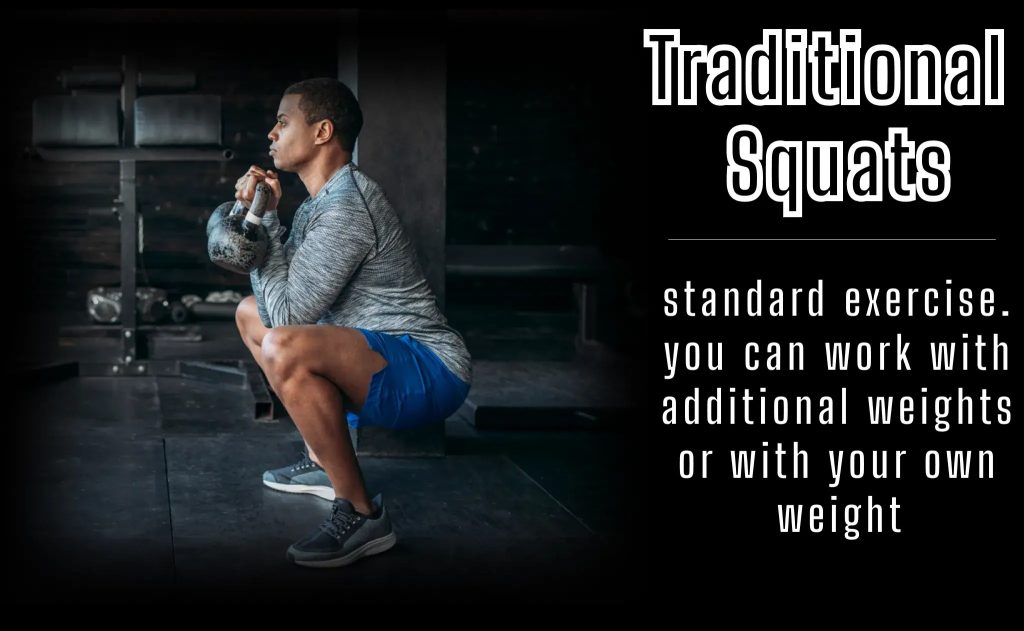
When it comes to leg workouts, squats are often considered the go-to exercise for building strength and size in the lower body. However, with the emergence of the Jefferson Squat, some fitness enthusiasts are beginning to question whether the traditional squat is still the best option.
Jefferson Lift
- Involves a wider stance with your feet straddling the barbell, making it harder to balance and challenging your core and adductor muscles.
- May be more beneficial for individuals who have muscle imbalances or crave variety in their workout routine
- Extra emphasis on the outer portion of the quadriceps or vastus lateralis.
Traditional Squats
- Feet hip-width apart and descend into a squat with the barbell resting on your upper back
- Muscle imbalances may be a problem
- Emphasis on the whole leg muscles
The Jefferson Deadlift: A Forgotten Gem
In the world of weightlifting, the Jefferson Deadlift often takes a backseat to its more popular counterparts like the conventional deadlift or the sumo deadlift. Yet, this exercise is a forgotten gem that deserves a closer look.
The Jefferson Deadlift targets the entire posterior chain, including the hamstrings, glutes, lower back, and even the grip strength. By incorporating the Jefferson Deadlift into your training routine, you can add variety, challenge your muscles in a different way, and improve your overall strength.
Benefits of Jefferson Deadlift
Unlike the conventional deadlift, where you have a symmetrical stance with the barbell positioned in front of you, the Jefferson Deadlift has a staggered stance with the barbell placed between your legs.
- This unique setup engages the muscles differently and emphasizes the posterior chain in a way that can help correct muscle imbalances.
- It also provides a great opportunity to develop grip strength since you’ll need to maintain a tight grip on the barbell throughout the lift.
- By adding the Jefferson Deadlift to your training routine, you can break through plateaus, target the posterior chain more effectively, and even improve your grip strength.
Fueling Growth with Jefferson Squats in Circuit Trainings
In the world of fitness, there are countless exercises that promise to help you achieve your goals. One exercise that often flies under the radar but has the potential to fuel your growth is the Jefferson Lift. This unique exercise targets multiple muscle groups, challenges your balance, and can be a valuable addition to your training routine.
Circuit training is a highly effective training method that involves performing a series of exercises back-to-back with 30 seconds rest in between.
Whole Body Circuit Training
- Bent-over Rows – 10 reps
- Push-ups – 15 reps
- Burpees – 10 each side of the barbell
- Pull-ups – 10 reps
- Jefferson Squats – 12 reps
Leg Focused Circuit Training
- Lunges – 12 reps
- Calf-Raises – 20 reps
- Step-ups – 20 reps
- Toe-touches – 15 reps each side
- Jefferson Squats – 12 reps
By adding Jefferson Squats into your circuit training, you will no longer have the problem of making your quads bigger even without the help of a squat rack. Making it easier for you to just add weights into your Jefferson’s at ease.
Jefferson Squat Supporting Cast: Nutrition
When it comes to achieving fitness goals, exercise is just one piece of the puzzle. Proper nutrition plays a crucial role in supporting your training efforts and maximizing results. After an intense Jefferson Squat workout, it’s important to fuel your body with the right nutrients to aid in recovery and muscle growth.
Here are some key points to understand the role of nutrition in supporting your Jefferson Squat workouts:
- Proper nutrition helps optimize energy levels, endurance, and recovery.
- Protein is an essential nutrient for muscle growth and repair. Including an adequate amount of protein in your diet is crucial to support the development of lean muscle mass, which can be enhanced by the Jefferson Squat exercise.
- Carbohydrates are important for replenishing glycogen stores, which are depleted during intense workouts. Including complex carbohydrates in your post-workout meal can help restore energy levels and aid in recovery.
- Healthy fats, such as those found in avocados or nuts, provide essential fatty acids that support overall health and help regulate hormone levels.
Now, let’s explore some key nutrition tips to optimize your Jefferson Squat workouts:
- Prioritize a balanced diet that includes a variety of whole foods, such as lean proteins (chicken, fish, tofu), fruits, vegetables, whole grains, and healthy fats.
- Aim to consume an adequate amount of protein in each meal, as it is crucial for muscle repair and growth. Good sources of protein include lean meats, poultry, fish, eggs, dairy, and plant-based proteins like beans and legumes.
- Include complex carbohydrates, such as whole grains, vegetables, and fruits, to replenish glycogen stores and provide sustained energy during your workouts.
- Stay hydrated by drinking water throughout the day. Proper hydration supports overall performance and aids in recovery.
- Consider incorporating a post-workout meal or snack that includes a combination of protein and carbohydrates to replenish energy stores and promote muscle repair. This could be a whey protein shake with a banana or Greek yogurt with berries and granola.
Conquer the Iron Throne with Jefferson Squat
In the battle for strong and powerful legs, there is one exercise that can help you conquer the Iron Throne of leg training: the Jefferson Squat. This unconventional squat variation specifically targets your quadriceps and can take your leg workouts to a whole new level.
Stronger Legs for Everyday Functionality
Having strong legs goes beyond aesthetics and gym performance. It has a direct impact on your everyday functionality. Whether you’re climbing stairs, carrying groceries, or participating in sports activities, strong legs are essential.
The Jefferson Squat is a functional exercise that mimics real-life movements, making it highly beneficial for daily activities. By targeting your quadriceps, you’ll develop greater strength and stability in your legs, enabling you to move more efficiently and with less risk of injuries. Incorporating this exercise into your fitness routine will not only help you conquer the Iron Throne of leg training but also enhance your overall functionality in day-to-day life.
Remember, conquering the Iron Throne of leg training requires consistency, patience, and proper form. With dedication and the inclusion of Jefferson Squats in your leg routine, you’ll be well on your way to achieving strong, powerful legs that can conquer any challenge that comes their way.

